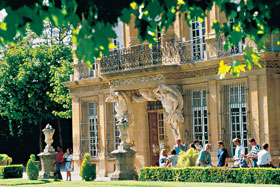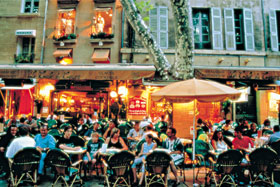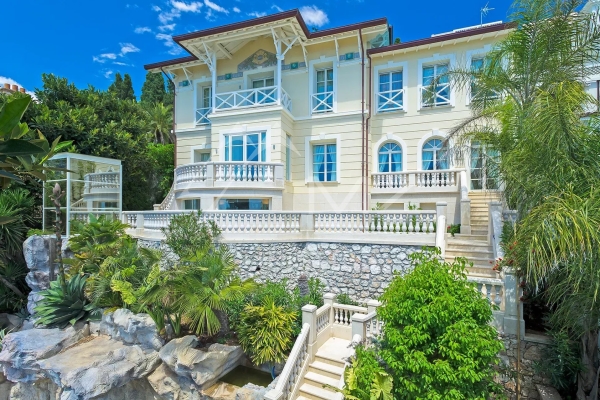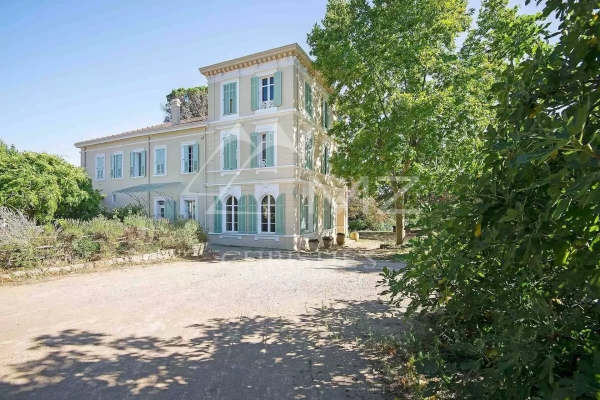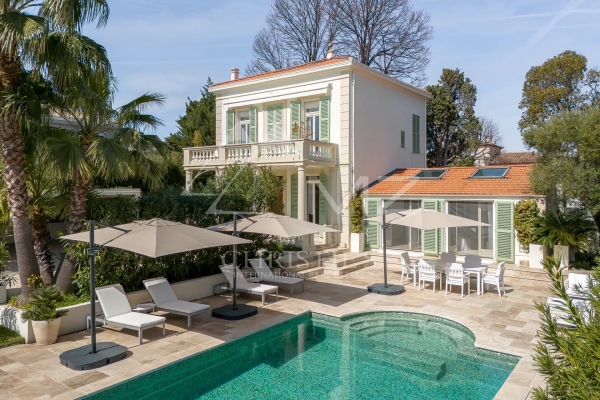Aix, the centre of “La Belle Provence”
A town on a human scale, an enviable geographic location and major cultural and economic assets - nothing seems to stop the development of Aix. This Provençal town exploits its potential with rationality and discernment…
A town on a human scale, an enviable geographic location and major cultural and economic assets - nothing seems to stop the development of Aix. This Provençal town exploits its potential with rationality and discernment…
One recognizes this thermal spa of Roman origin for its narrow streets, colourful façades and charming private mansions. Art and water explain its duality. Inimitable architecture and numerous fountains… A stroll suffices to be convinced. Fernand Pouillon wrote : “Ensembles are more important than isolated masterpieces, because they play a part in people’s daily lives. Aix is an ensemble”. The town’s 137,000 inhabitants certainly enjoy living there. The listed houses coexist with the town of the future in an area of about 46,500 acres. With the international airport of Marseille-Provence just 25 km away, four motorways and the TGV hi-speed train station putting Lyon 1 hr 20 away, Paris 2 hr 50, Aix-en-Provence is a European crossroads, a meeting-point both economic and cultural.
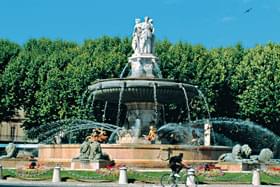
Theatre, opera, exhibitions, markets seven days a week, fairs and flea markets… Here, one celebrates Provence and respects craftsmanship. The local cuisine recalls olives and sunshine. Cheerful, generous and varied, it uses oregano, rosemary and thyme. The city is a past-master in the art of making “calissons” (almond-paste candies) and produces good wines, the “Coteaux d’Aix”. But the man who really did the most for the town is Paul Cézanne : Aix is honouring the 100th anniversary of his death this summer. In many of his paintings, Cézanne immortalized the Sainte-Victoire mountain, a place of pilgrimage and a favourite site for hikers.
Not content with resting on the laurels of its historic and cultural riches, Aix pursues a very go-ahead economic policy. It welcomes innovative companies that create new jobs. Three universities, “grandes écoles” such as the “Institut d’Etudes Politiques” and “Ecole Nationale Supérieure des Arts et Métiers”, and 40,000 students (accounting for over a quarter of the population) confer on Aix its status as a reference in the field. In this particular area, no resting on its laurels either : the university centres are being extended and student life is being improved (restructuring of halls of residence and development of sports facilities). The presence of all these students naturally has an impact on the property market : demand for small flats, to buy and to rent, is visibly growing : bedsitters and 1 bedroomed apartments are quickly snapped up, and investments for rental purposes are in full swing.
“The most expensive sq. metre in France after Paris”… Aix’s reputation is surprising, though not when one investigates the reasons. The town is not very big (it can easily be covered on foot), but is split into different parts. First the old town, the Bourg Saint-Sauveur and the Cité Comtale, where prices per sq. metre range from 4,000 to 5,000 €. Then, Villeneuve : facing the Palais de Justice, an extensive area of development undertaken in the late 16th century on the site of the king’s gardens saw the construction of mansions with ornate frontages. Next, the Cours Mirabeau : gardens, fountains and cafés, an invitation to relax. From here, one catches a glimpse of the boulevards which replaced the ancient ramparts. They also separate the old part of town from the new. But before passing over, there’s the Mazarin neighbourhood, laid out in the 17th century like a chequerboard. It owes its name to the Archbishop, the brother of the Cardinal. In those days, it played host to the middle-class and members of Parliament. Its residences are characterized by generous proportions and a price per sq. metre now close to 6,000 €. Those who can’t afford apartments in the town centre head for sectors such as Val Saint-André, Le Pigonnet or Puyricard, where they benefit from larger surface areas. Fans of villas opt for the Route de la Sainte-Victoire, Le Tholonet, Puyricard, Les Pinchinats and the hills of Montegai, where prices start at 1 million €. More wealthy clients head for Saint-Marc-Jaumegarde.
Under the pressure of demand, Aix is building new accommodation : the Sextius-Mirabeau activity zone, begun 13 years ago, covers 47.5 acres and is aiming for no less than 2,000 apartments, parking places (a rare commodity !), offices and shops. Also scheduled to appear around 2007 : the Vendôme Rotonde and Aquae Sextiae developments, with 200 apartments at 4,500 € per sq. metre. Finally, development of the Puyricard neighbourhood will comprise some 175 acres, an operation which will push the boundaries of Aix even further out, finally establishing its maximum extent.
By Laetitia Rossi - photos : D. Basse
